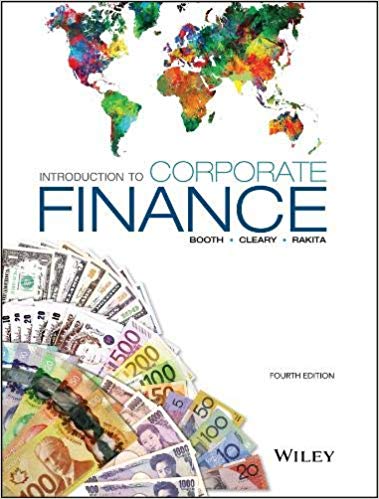a. How (conceptually) is the discount rate for capital budgeting purposes defined and calculated? Is this number appropriate for analyzing the asset-replacement decision at hand?
a. How (conceptually) is the discount rate for capital budgeting purposes defined and calculated? Is this number appropriate for analyzing the asset-replacement decision at hand? Why or why not? What impact, if any, would a rate below or above 10% have on the recommended course of action for XYZ Company? To address this issue, first prepare a schedule in Excel showing what the NPV results of the base-case analysis would be after letting the WACC vary from a low of 8% to a high of 13%, in increments of 1%. For each discount rate, recalculate the difference in NPV of the two investment alternatives. Next, use the Data Table option in Excel to perform and present the results of this sensitivity analysis. Finally, using the Goal Seek option in Excel, determine the “breakeven” discount rate, that is, the rate that would make XYZ indifferent between the two decision options (based on an NPV analysis of the base-case facts).
b. Use the Goal Seek option in Excel to determine the breakeven operating pre-tax cash inflow associated with the replacement asset (i.e., the annual pre-tax cash inflow for the replacement machine that would make XYZ indifferent between keeping vs. replacing the existing machine). What keen managerial insight is yielded from this analysis?
c. Respond to the two queries raised by Watson regarding the possible need to make an up-front commitment of additional (net) working capital if the replacement machine is purchased: (1) Does the base-case analysis need to be changed? Why or why not? (2) If the team replaces the machine, XYZ would have to commit to incremental (net) working capital of $20,000. Would this incremental investment affect the recommended course of action? (Show calculations.)
d. Under the assumption that the useful lives of the two assets differ, a possibility noted by Smith, and based on the use of the NPV decision model, provide a recommendation as to which asset XYZ should choose. Support your answer with appropriate calculations and citations to the literature
XYZ Company was formed in the United States seven years ago by Jim Smith, Marsha Chang, and Earl Watson, who together purchased a commercial machine shop that had been in business for more than 40 years but, at the time of the acquisition, was feeling pressure from a variety of new entrants into the markets in which the machine shop competed. Smith had a distinguished military career and felt he could use the skills he acquired in the military to help this business return to its previously highly profitable state. Smith currently serves as the president and CEO of the company. XYZ produces three primary product lines, all of which are made of brass and are water-related: flow controllers, valves, and pumps. Marsha Chang, a long-time friend of Smith and his family, and a practicing CPA (Certified Public Accountant) and CMA® (Certified Management Accountant), joined the company as its CFO shortly before the formation of XYZ. Earl Watson, a high school friend of Smith, had worked as the manufacturing supervisor at the company for the past 10 years and, at the request of Smith, decided to stay onboard after the formation of XYZ. Over the past several years, Watson had toyed with the idea of introducing more technologically up to-date equipment that, he thought, could help ameliorate the competitive position of the company. Recently, Chang instituted an activity-based costing (ABC) system and a “bare-bones” Enterprise Resource Planning (ERP) system that, among other things, helped the company assess customer profitability and price its products more competitively. A new marketing manager, Maria Sanchez, was hired last year to develop and implement an aggressive product-promotion plan.
Step by Step Solution
3.36 Rating (162 Votes )
There are 3 Steps involved in it
Step: 1
a The discount rate ...
See step-by-step solutions with expert insights and AI powered tools for academic success
Step: 2

Step: 3

Ace Your Homework with AI
Get the answers you need in no time with our AI-driven, step-by-step assistance
Get Started


